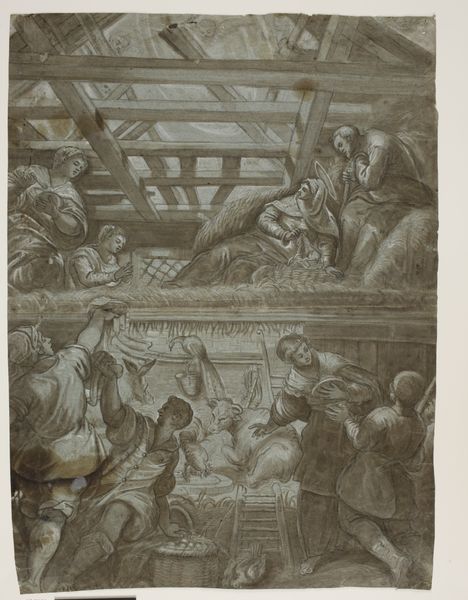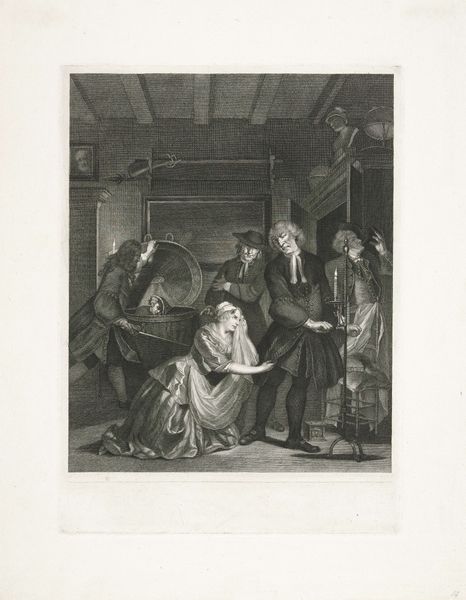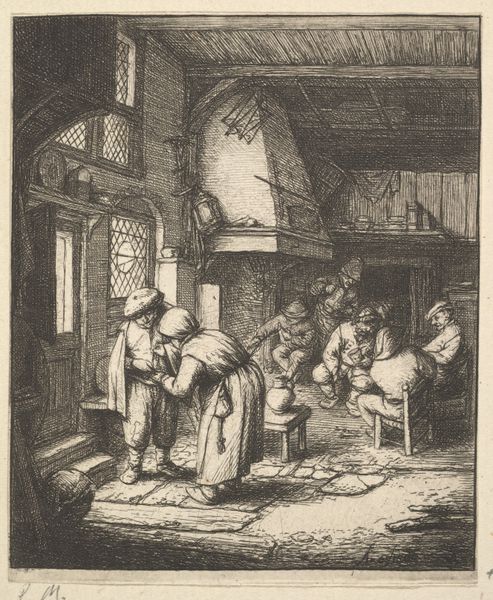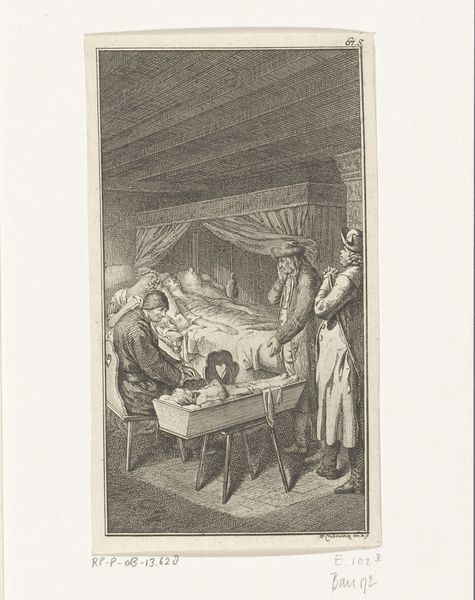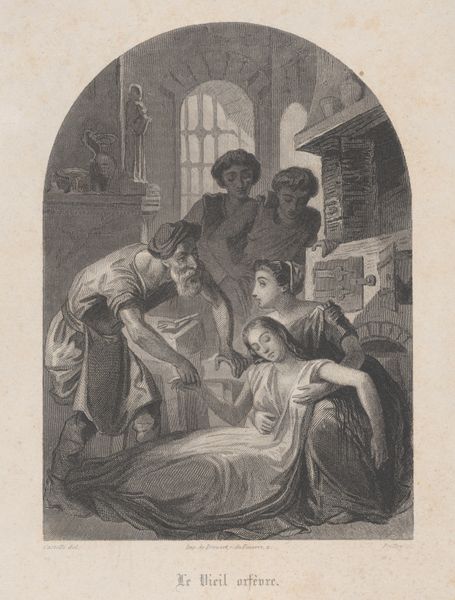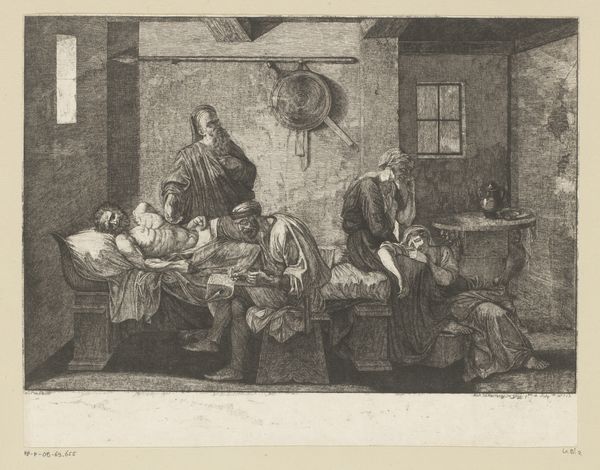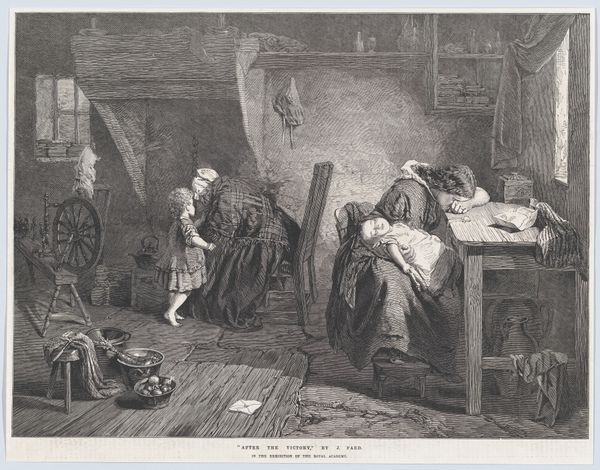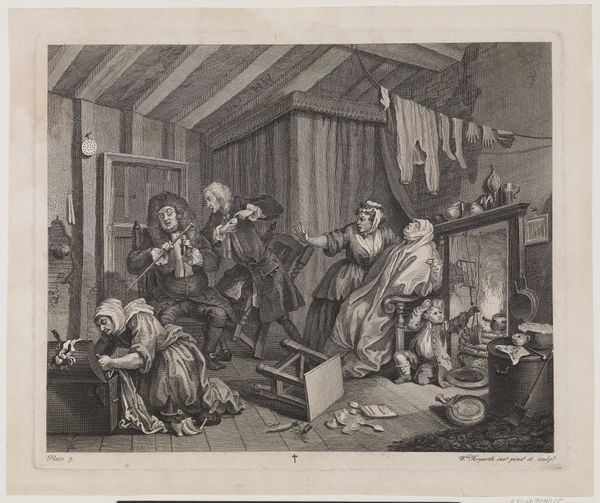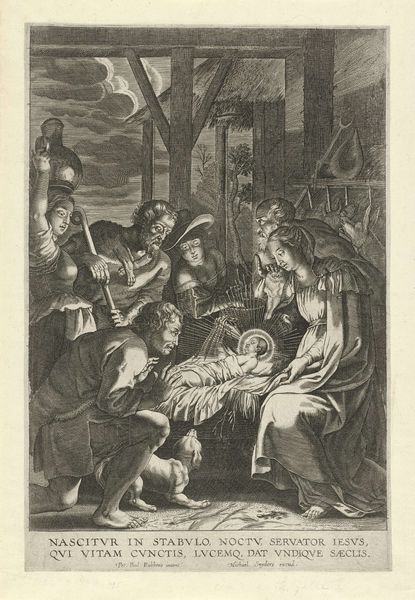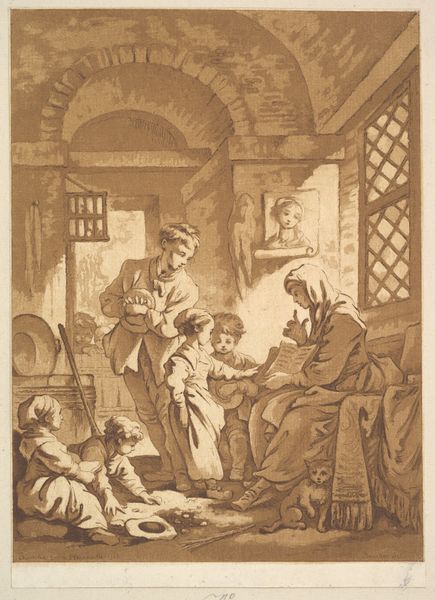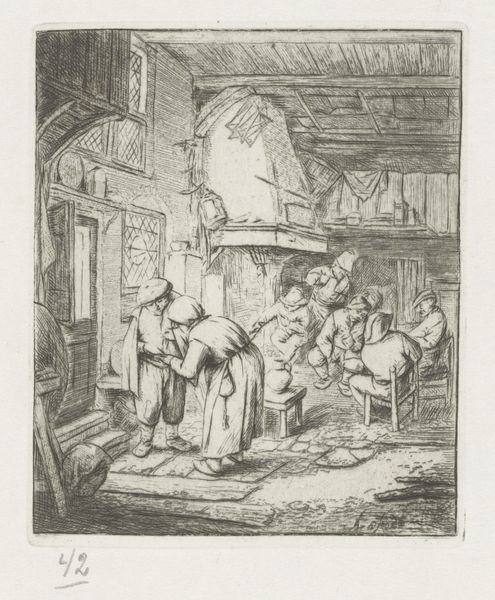
engraving
#
baroque
#
figuration
#
history-painting
#
engraving
Dimensions: height 346 mm, width 220 mm, height 340 mm
Copyright: Rijks Museum: Open Domain
Curator: Good morning, and welcome. We're standing before "Death of Saint Bruno", an engraving realized sometime between 1623 and 1676, attributed to François Chauveau. It resides here at the Rijksmuseum. Editor: The drama is evident even at first glance. The figures, shrouded in shadow, and the stark simplicity of the scene immediately suggest a moment of solemnity and profound loss. Curator: Indeed. The print captures a very particular image within the Carthusian order—the moment of Saint Bruno's passing. It reveals much about the ideals upheld within the monastery: a life dedicated to austere simplicity and devout contemplation. Notice the faces, marked by deprivation, perhaps. Editor: Precisely. I find the arrangement compelling; observe how the engraver uses the lines to guide the eye towards the central figure—the body of Saint Bruno himself. And observe, also, how light and shadow play here, reinforcing the spatial relationships among the group of figures assembled, thus creating layers of depth within this fairly compressed single plane. The composition seems constructed to inspire veneration, doesn't it? Curator: It does. Death and devotion became prominent themes in Baroque art. One could suggest that imagery played a crucial role, therefore, for it visualized religious doctrines but it also aided in maintaining established church power structures, during that era. Note also the deliberate emphasis placed on implements like the crucifix. Editor: Yes, that single figure raising the crucifix is commanding. Speaking of symbolic objects, did you also note that haunting memento mori perched on the shelf, upper left? These objects introduce vanitas themes regarding life's transience—contrasting starkly with ideals of permanence that, seemingly, are upheld by the church itself. I am deeply taken by the dramatic interplay between light and shadow, an intrinsic visual tension that enhances its overall feeling. Curator: Absolutely. In conclusion, the "Death of Saint Bruno" presents us with not only a biographical episode, but also a vignette reflective of cultural ideals and an exercise of faith as it played out in Baroque Europe. Editor: An engraving compelling in both its subject matter and technical execution, revealing intricate spatial relationships and the powerful contrasts within, and around, its sombre setting. Thank you.
Comments
No comments
Be the first to comment and join the conversation on the ultimate creative platform.
